When we think of fruit trees, names like apple, peach, or cherry often come to mind. But beyond the familiar orchard staples lies a surprising world of lesser-known trees quietly producing delicious, edible fruit. Some are native species you might walk past without a second glance; others are ornamental favorites hiding a culinary secret.
This list reveals 20 trees you probably didn’t realize can feed you—whether it’s a shade-loving serviceberry, a flowering dogwood with edible drupes, or even a magnolia with petals that can be used in the kitchen. Perfect for food forests, edible landscaping, or just a bit of garden curiosity, these trees prove that beauty and bounty can go hand in hand.
Strawberry Tree (Arbutus unedo)
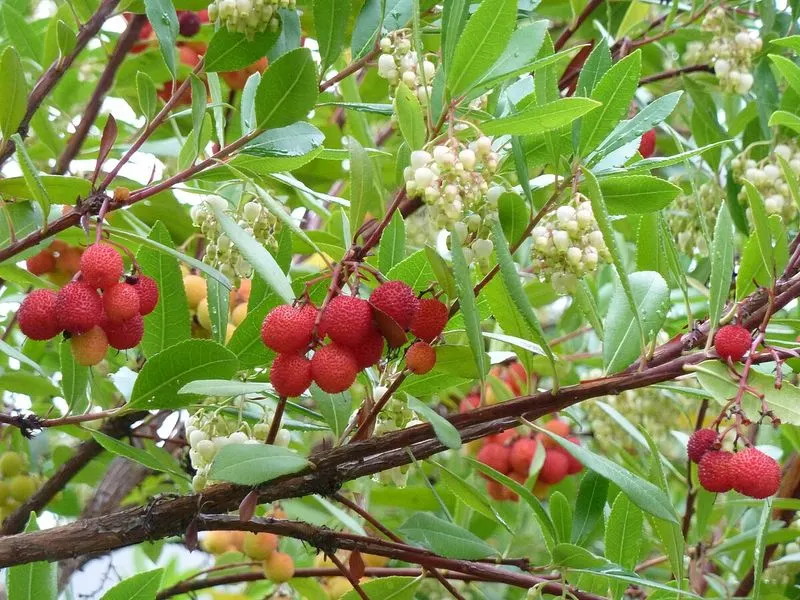
Often mistaken for its namesake, this tree isn’t shy about flaunting its vibrant red fruit. Resembling strawberries in hue but not quite in taste, the fruit is a blend of sweet and tart. Found throughout the Mediterranean, it plays a subtle role in local cuisines. Despite its modest fame, the strawberry tree thrives in well-drained soils, offering an attractive addition to landscapes. As the seasons change, its evergreen leaves provide a consistent splash of greenery, making it a year-round beauty. Perfect for gardeners seeking something a little different.
Serviceberry (Amelanchier)

With delicate white blossoms that give way to dark purple berries, the serviceberry holds a sweet promise. Its fruit, reminiscent of blueberries, is often used in pies and jams. Native to North America, this tree is a favorite among birds and humans alike. Its striking appearance makes it a versatile choice in ornamental gardens. As autumn approaches, the leaves transform into vibrant shades of red and orange, providing a visual feast. A true testament to nature’s versatility, the serviceberry is as practical as it is beautiful.
Mulberry Tree (Morus)
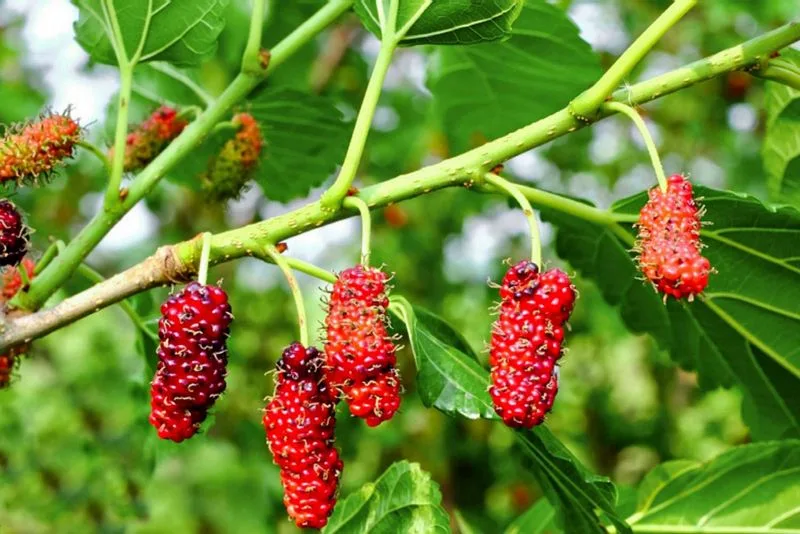
The mulberry tree, with its sprawling branches, gifts us with juicy, dark berries. Often enjoyed fresh or dried, they boast a sweet, slightly tart flavor. Flourishing in warm climates, these trees can reach impressive heights, offering shade and sustenance. Though sometimes overshadowed by more mainstream berries, mulberries hold a rich history in folklore and agriculture. Their leaves, famously eaten by silkworms, add another layer of intrigue. Ideal for those who appreciate both beauty and utility in their garden.
Elderberry (Sambucus)
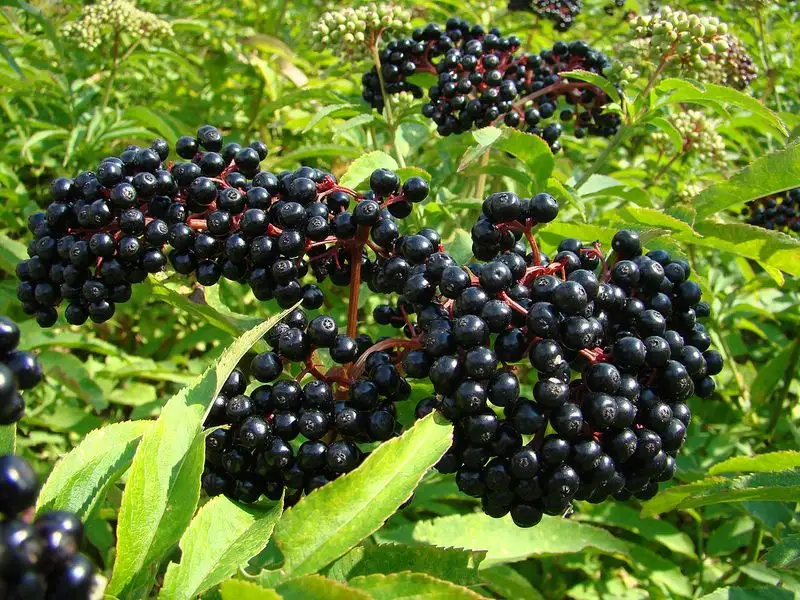
Elderberries have long been celebrated for their medicinal properties, often brewed into syrups and teas. With clusters of dark, glossy berries, they are both a visual and culinary delight. Growing in temperate regions, these shrubs are hardy and versatile. The delicate white flowers are equally cherished, often used to create fragrant cordials. As a gardener’s treasure, elderberries invite birds and beneficial insects, enhancing biodiversity. Incorporating elderberries into your landscape promises an abundance of benefits beyond just aesthetics.
Hawthorn (Crataegus)

Hawthorn trees, with their thorny branches and bright red berries, are often seen as guardians of hedgerows. The berries, known as haws, offer a slightly sweet taste, often transformed into jams or wines. Historically, they’ve held symbolic meanings across cultures, representing love and protection. Thriving in a variety of soils, hawthorns are remarkably resilient. As their leaves dance in the autumn breeze, they add a rustic charm to any setting. For those intrigued by folklore and history, hawthorns are a perfect fit.
Medlar (Mespilus germanica)
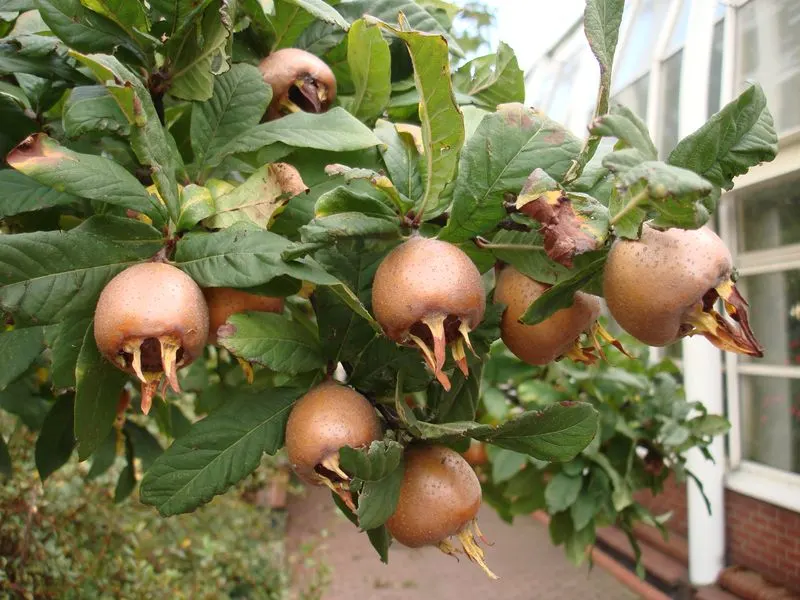
The medlar, a curious fruit, requires patience as it ripens. Once bletted, it transforms from hard and acidic to sweet and custard-like. This European native has charmed many with its peculiar taste and historical relevance. Often found in old orchards, medlars have a distinctive appearance, with large leaves framing the fruit. As winter approaches, they remain a talking point for their unique maturation process. A conversation starter for any garden, medlars are a delightful nod to the past.
Quince (Cydonia oblonga)

Quince, with its golden hue and aromatic scent, bridges the gap between apples and pears. Often overlooked, this fruit is cherished for its unique flavor profile when cooked. Originating from Persia, it holds a storied place in culinary history. Its distinctive shape and vibrant blooms make it an ornamental favorite. As the days grow cooler, quinces turn gardens into fragrant havens. Perfect for those who appreciate a touch of exoticism in their backyard, quinces are both decorative and delicious.
Loquat (Eriobotrya japonica)
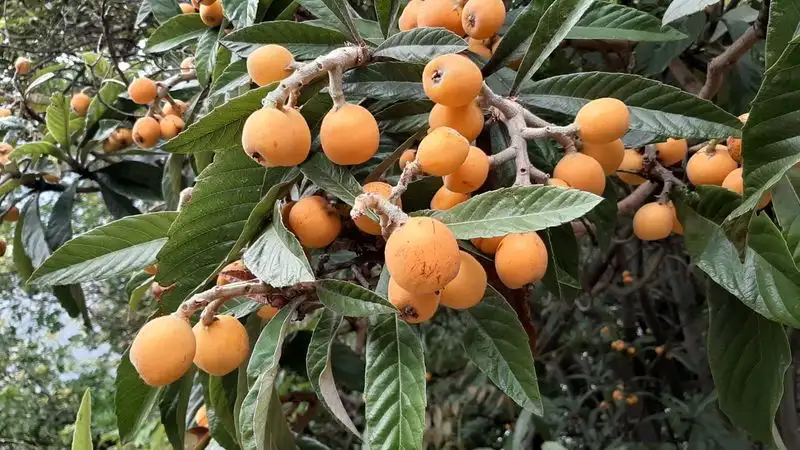
The loquat tree, with its glossy foliage, bears clusters of bright orange fruit that are both sweet and tangy. Native to Asia, it thrives in subtropical climates, offering a refreshing treat as spring unfolds. Often used in jams and desserts, loquats bring a burst of sunshine to the palate. Their adaptability makes them a popular choice for gardeners seeking something exotic. As the weather warms, loquats herald the start of new growth and possibilities. A vibrant addition to any garden, blending beauty with bounty.
Cornelian Cherry (Cornus mas)

Cornelian cherries, though lesser-known, offer a tangy fruit that brightens up preserves and liqueurs. With its vibrant yellow flowers, this tree heralds the arrival of spring. Native to Europe and Asia, it adds a touch of elegance to gardens and parks. The berries, rich in vitamin C, are a favorite among wildlife, providing nourishment and color. As the seasons shift, cornelian cherry trees stand as resilient figures in the landscape. Ideal for those who seek both ornamental and practical benefits in their gardens.
Jujube (Ziziphus jujuba)
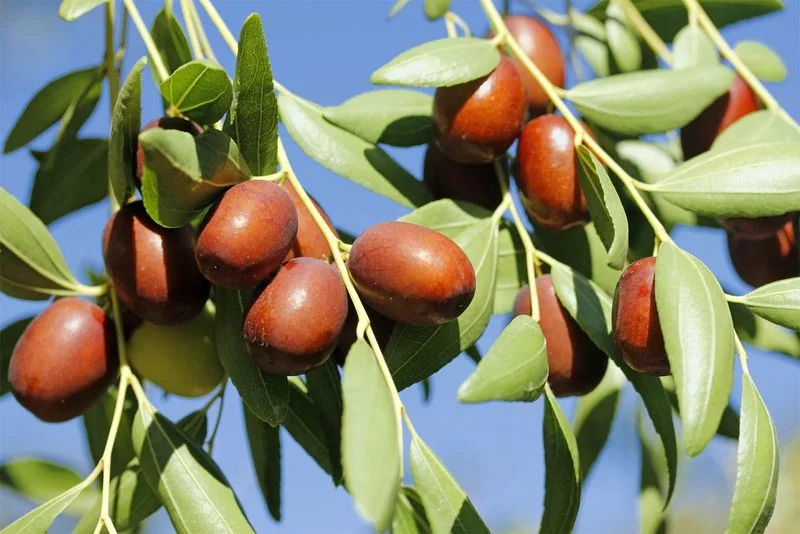
Known as the “Chinese date,” the jujube tree offers small, sweet fruits that can be eaten fresh or dried. Thriving in arid climates, these trees are both drought-resistant and productive. Their fruit, resembling small apples when ripe, is beloved in many cultures for its health benefits. As a symbol of fertility and abundance, jujubes hold a cherished place in traditional medicine. With their hardy nature, they make a reliable addition to orchards and gardens, offering a taste of tradition and resilience.
Mayhaw (Crataegus aestivalis)
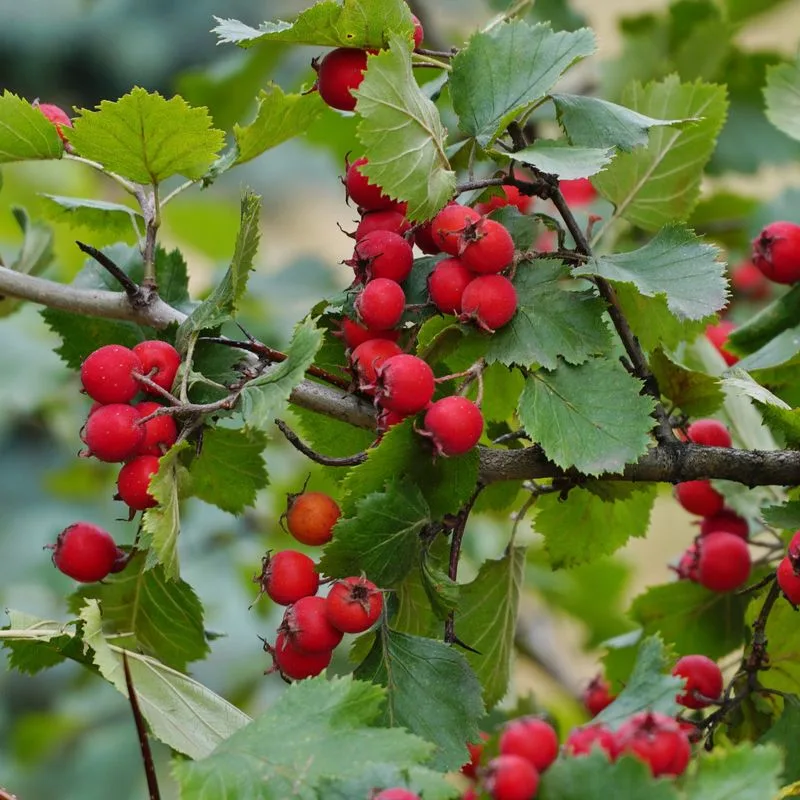
The mayhaw tree, native to the Southern United States, produces small, tart berries ideal for making jellies. Often found in wetland areas, it stands resilient against the elements. Its fruit, celebrated for its tangy flavor, is a staple in traditional Southern cuisine. As spring arrives, mayhaw trees burst into bloom, offering a delicate fragrance and a hint of nostalgia. A symbol of Southern heritage, they bring both culinary and cultural richness to any landscape. Perfect for those who value regional traditions.
Sorbus (Rowan)

Sorbus, or rowan trees, are steeped in myth and mystery. With their bright orange-red berries, they offer a tart treat often used in jellies and wines. Found in Northern Europe, these trees are reputed to ward off evil spirits. Their delicate silver-green leaves create a striking contrast against the fiery berries. As autumn sets in, rowans become a beacon of color and folklore. Ideal for those who appreciate a touch of the mystical in their garden, they are as storied as they are beautiful.
Pawpaw (Asimina triloba)
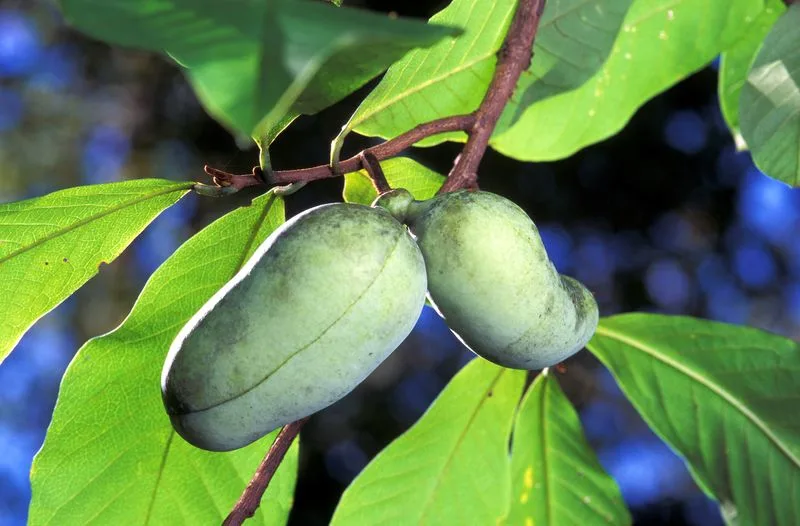
The pawpaw tree, often dubbed the “forgotten fruit,” boasts a tropical-tasting fruit with custard-like texture. Native to the Eastern United States, it thrives in shady, humid environments. The fruit, resembling a cross between a banana and mango, is a treat for those lucky enough to find it. As a relic of prehistoric times, pawpaws whisper tales of a wilder landscape. Their large, lush leaves provide an exotic touch, drawing curious eyes. Perfect for adventurous gardeners, pawpaws bring a taste of the tropics to home soil.
Osage Orange (Maclura pomifera)
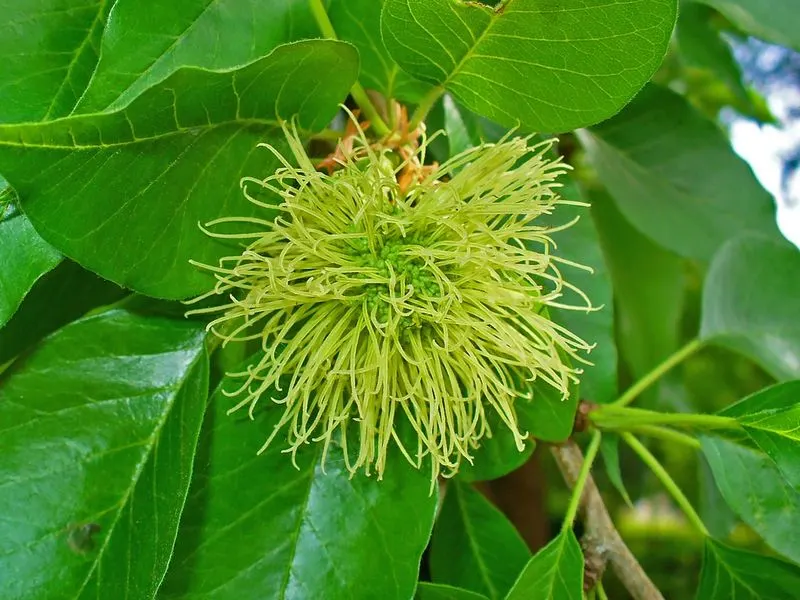
Despite its name, the osage orange doesn’t produce citrus fruit. Instead, it offers intriguing, wrinkled green balls often used for decoration. Once a staple in Native American culture, its wood was prized for making bows. Found in the Midwest, these trees survive harsh conditions with resilience. Their fruit, though not widely consumed, sparks curiosity with its unusual appearance. A conversation piece in any garden, osage oranges invite exploration and storytelling. Ideal for those who appreciate history and horticulture in equal measure.
Sea Buckthorn (Hippophae rhamnoides)
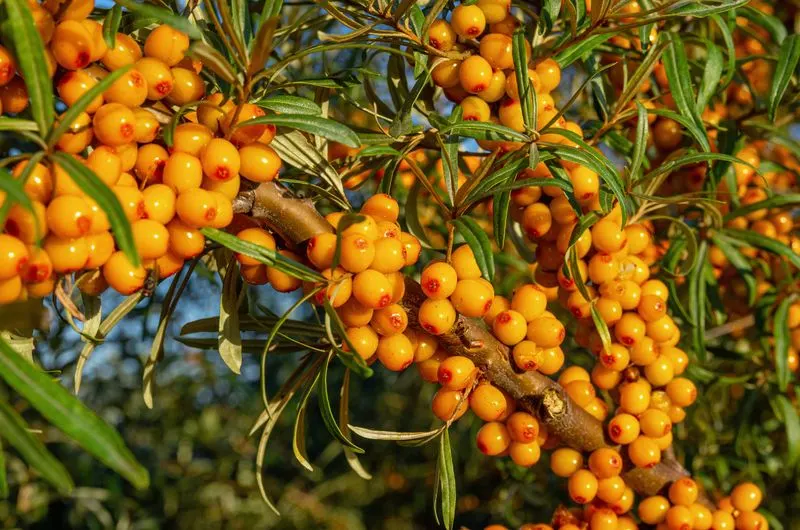
Sea buckthorn, with its vivid orange berries, is a powerhouse of nutrients. Growing along coastlines, it thrives in sandy, salty conditions. The berries, rich in vitamins, are used in juices and cosmetics. Their tart flavor is balanced by a hint of sweetness, making them versatile in culinary creations. As a hardy shrub, sea buckthorn offers both beauty and practicality in challenging environments. For those seeking a plant that supports both health and landscape, it stands as a vibrant testament to nature’s resilience.
Sloe (Prunus spinosa)
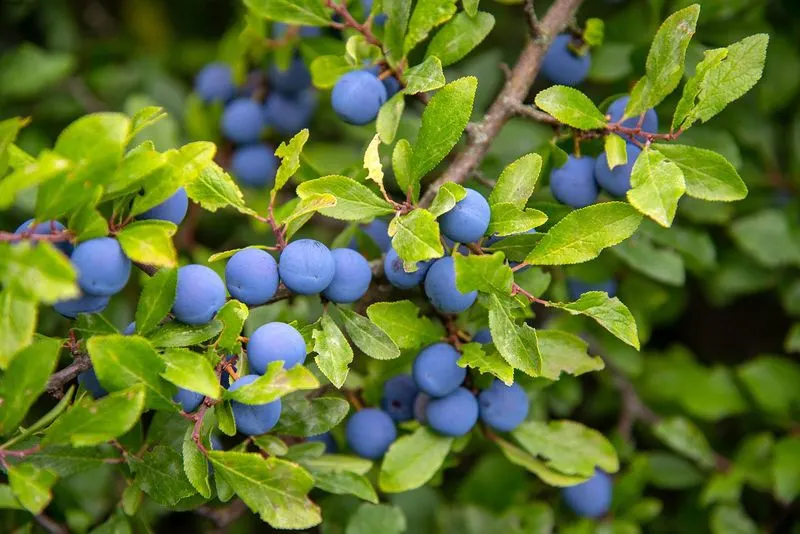
Sloes, the fruit of the blackthorn bush, are best known as the key ingredient in sloe gin. These small, dark berries pack a tart punch, often sweetened in beverages and preserves. Found in European hedgerows, they thrive in temperate climates. Their spiky branches provide habitat for wildlife, making them an ecological asset. As autumn deepens, sloes become a symbol of seasonal change and local tradition. Ideal for those who enjoy crafting their own spirits, they add a touch of the wild to any harvest.
Persimmon (Diospyros)
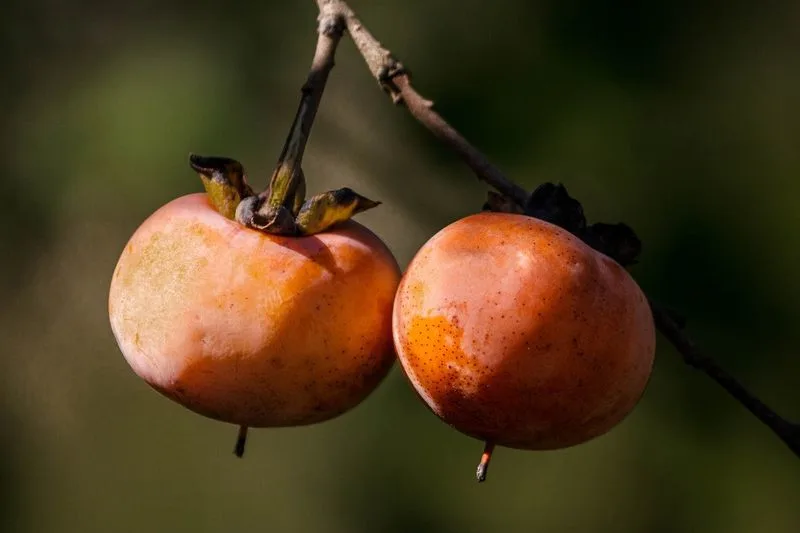
Persimmons, with their vibrant orange hue, are a winter delight. These fruits, sweet when ripe, are enjoyed fresh or dried. Originating from Asia, persimmon trees flourish in warm, sunny climates. Their glossy leaves and striking fruit make them a standout in gardens. As the air turns crisp, persimmons bring warmth and color, bridging the seasons. For those who savor a unique blend of sweetness and aesthetics, persimmons offer both. A wonderful choice for adding a touch of the exotic to your garden space.
Che (Cudrania tricuspidata)
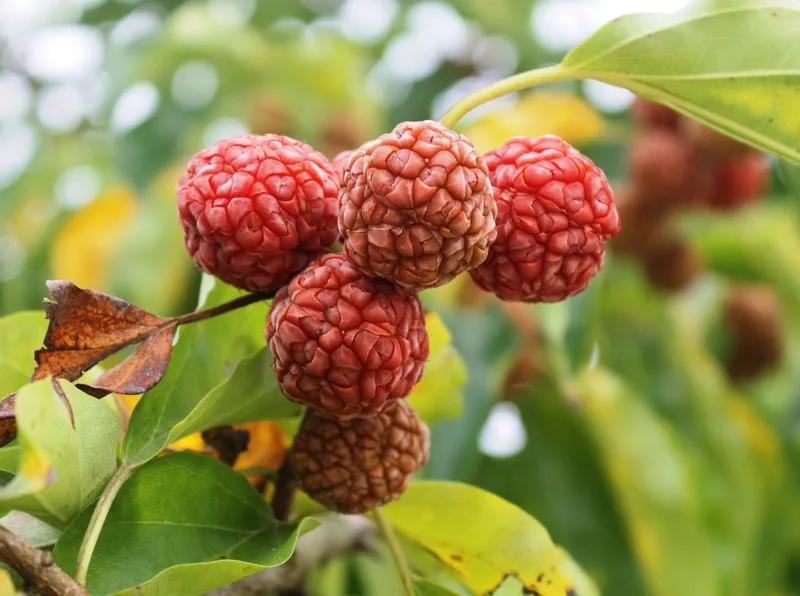
The che tree, often overlooked, bears lumpy fruit that surprises with its sweet taste. Native to East Asia, it thrives in warm climates, offering a nod to its exotic origins. The fruit, resembling raspberries, is enjoyed fresh or dried. With broad leaves and sturdy branches, che trees make a reliable addition to orchards. As summer reaches its peak, these trees offer a visual and flavorful treat. Ideal for those who seek a taste of the unfamiliar, che trees are a hidden gem in fruit cultivation.
Banana Passionfruit (Passiflora mollissima)

Banana passionfruit vines offer a tantalizing fruit with a unique appearance. Elongated and yellow, the fruit harbors a tangy, aromatic pulp. Native to South America, these vines thrive in tropical climates. Their intricate purple flowers lend a touch of drama and allure. As the season unfolds, banana passionfruit becomes a conversation starter among garden enthusiasts. With its exotic flair and delectable taste, it’s perfect for those who love to experiment with flavors and aesthetics. An enchanting choice for any tropical-themed garden.
Tamarillo (Solanum betaceum)
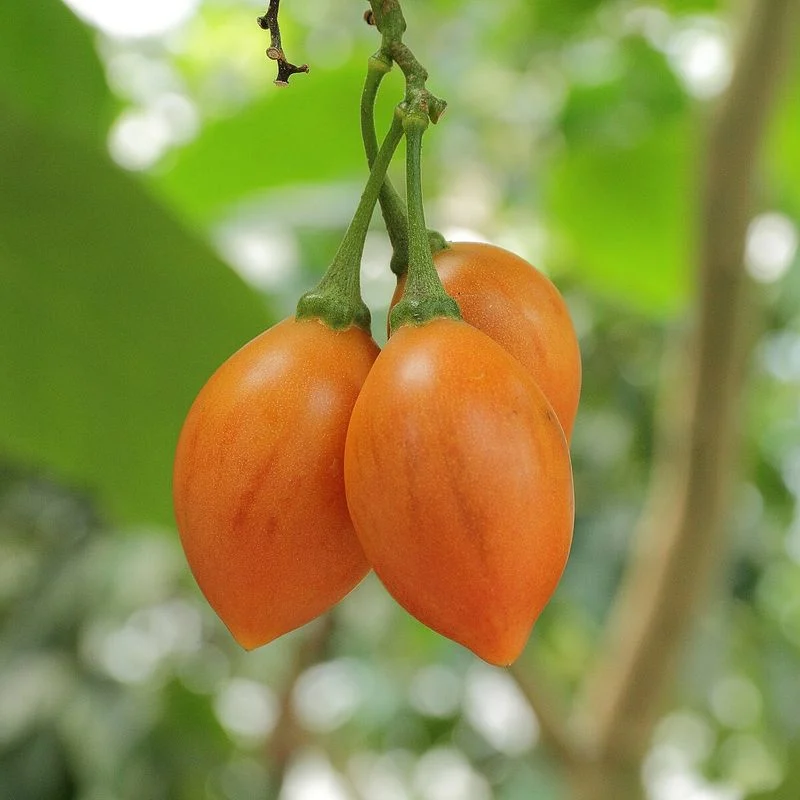
Also known as the “tree tomato,” the tamarillo offers a tangy fruit embraced by food enthusiasts worldwide. Originating from South America but flourishing in New Zealand, it adds a splash of color to dishes. The fruit, with its egg-like shape, is enjoyed both raw and cooked. Its tree, with robust branches, complements the fruit’s vibrant hue. As autumn descends, tamarillos provide a sensory feast for sight and taste. A prime pick for those who relish exotic flavors and vibrant garden displays.

